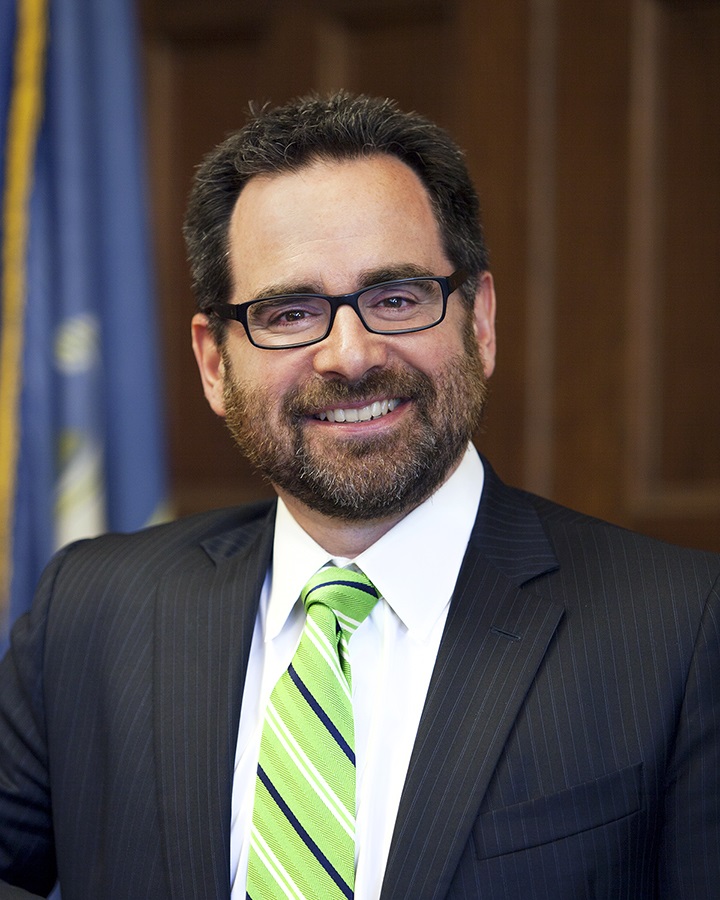
Message from
Commissioner Klee
Dear Friends,
As we review the 2018 Connecticut General Assembly Session, I am struck by a sense of hope for the future of our state. With the passage of Senate Bills 7 and 9, Connecticut is leading the charge nationally in addressing one of the most pressing global issues of our time, climate change.
There is no denying that climate change is happening; we see its impacts all around us, from the storms that devastated Texas, Florida, Puerto Rico and the Virgin Islands, to the roads in Connecticut that once did not flood, but now flood frequently.
It is incumbent upon this generation of global, federal, state, local, and business leaders to address climate change to ensure that future generations will not look back and ask why we did not take action.
|
|
Legislature Pushes Ahead on Climate and Renewable Energy
Two important climate and energy bills developed by Governor Malloy received approval in the final hours of the legislative session on May 9.
Senate Bill 7 enacts a recommendation from the Governor's Council on Climate Change to set an interim target for statewide reduction in greenhouse gas emissions - 45 percent reduction by 2030 - and requires consideration of emissions reduction in state energy planning. It also requires that the design of state- and federally funded projects take into account University of Connecticut/DEEP projections of sea-level rise.
SB 9 revamps the state's renewable-energy programs, in some cases rejuvenating programs that were set to expire. The bill:
- extends the amount of renewable energy the utilities are required to secure - from 20 percent in 2020 to 40 percent in 2030.
- authorizes unlimited residential rooftop solar through long-term, fixed-price tariffs to be developed by PURA that allows customers to use the power they generate from their system and ensures the tariff is set at a rate that gives the customer a reasonable rate of return on the investment;
- extends a program under which the utilities authorize commercial projects that produce energy with solar arrays and fuel cells; and
- authorizes a full-scale "shared solar" program in place of the existing pilot program.
|
2018 Ozone Season in Connecticut - Take Action to Make a Difference
The official 2018 ozone season began on May 1st and ends September 30th. Ground-level ozone is an air pollutant known to cause a number of health effects and also negatively impacts Connecticut's air quality and the environment. Ozone forms when air pollution from combustion sources like power plants and motor vehicles react in strong sunlight. Ozone can irritate the lungs so those with respiratory conditions should take extra precautions on bad ozone days.
Remind your staff and the public to take these actions to reduce their exposure to ground-level ozone and improve air quality:
- Get the daily air quality forecast. Sign up for EnviroFlash, a free online alert system, that delivers air quality information straight to your email inbox or cell phone;
- Purchase the most energy-efficient vehicle that meets your business/family's needs;
- Limit outdoor activities, especially for sensitive individuals such as older adults, children, and people with respiratory conditions, including asthma and emphysema;
- Delay mowing your lawn or using other garden equipment until the air quality is healthy again;
- Be smart at the fuel pump. Refuel your vehicle at night to reduce evaporation of gasoline and stop refueling when the nozzle clicks off;
- Choose a cleaner commute by carpooling or using public transportation;
- Avoid idling your vehicle unnecessarily; and
- Refrain from recreational wood burning
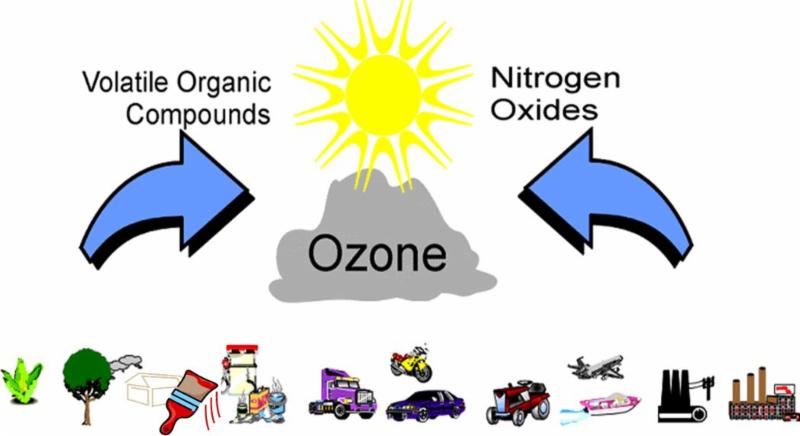
|
PURA Considers "Grid Modernization"
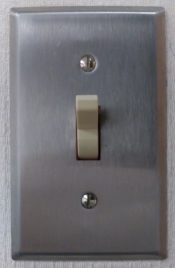 When we flip a switch and the light comes on, that action engages a sprawling, outdated infrastructure that doesn't readily adapt to the evolution of energy technology. "Grid modernization" means upgrading the electrical infrastructure to accommodate emerging technologies such as solar, wind, energy storage, and electric vehicles.
To address the evolving nature of the distribution grid and the overall electric system, the Public Utilities Regulatory Authority recently opened Docket No. 17-12-03,
PURA Investigation into Distribution System Planning of the Electric Distribution Companies. It aims to: (1) assess the existing state of each electric company's distribution systems and plans; (2) identify the near- and long-term needs of the distribution systems and what is driving them; and (3) consider whether new or modified planning objectives, metrics, solutions, performance incentives, oversight, or procurement mechanisms should be implemented.
"DEEP looks forward to participating in an open and transparent process to explore and evaluate cost-effectively integrating emerging technologies into our electric system," said Lauren Savidge, Director of the Office of Energy Supply.
The Comprehensive Energy Strategy (see section on electric power sector) highlights some specific approaches PURA could adopt, such as time-of-use rates and other dynamic-pricing options, advanced metering technologies, and energy-storage systems paired with other smart-grid options.
|
New/Updated General Permits
A new
General Permit (GP) for the Discharge of Groundwater Remediation Wastewater was issued in February 2018. This general permit applies to all wastewaters generated during the process of investigating and remediating groundwater and soil, and other related wastewaters whether discharged to surface water, groundwater, the collection system of a Publicly Owned Treatment Works (POTW) or hauled to a POTW. The GP combines and replaces the expired general permits that authorized discharges to the sanitary sewer and surface waters into a single regulatory framework. Many of the operational requirements remain substantively similar. There are, however, some significant changes to activities authorized, as well as new conditions applicable to surface water discharges.
Additional details.
The
Comprehensive General Permit for Discharges to Surface Water and Groundwater (Comprehensive GP) was issued in December 2017,
with an effective date of March 30, 2018. The Comprehensive GP replaces the surface and groundwater discharge portions of the General Permit for the Discharge of Water Treatment Wastewater, the General Permit for the Discharge of Non-contact Cooling Water and Heat Pump Water, and the General Permit for the Discharge of Hydrostatic Pressure Testing Wastewater. It also provides authorization for surface water and groundwater discharges of fire suppression testing wastewater, hydrant flushing wastewater, and boiler blowdown wastewater (to groundwater only when no boiler treatment chemicals are used). Registrations for authorization under the Comprehensive GP for existing discharges must be submitted by June 28, 2018.
Additionally, in August 2017, revisions were made to the
General Permit for Miscellaneous Discharges of Sewer Compatible Wastewater
to facilitate the authorization of wastewater discharges to the sanitary sewer formerly covered by the expired general permits referenced above.
|
|
Mosquito Season Is Upon Us
 Connecticut's Mosquito Management Program is a collaborative effort of DEEP, the Connecticut Agricultural Experiment Station (CAES), and the Department of Public Health (DPH). Together, these agencies monitor mosquito populations and humans for the prevalence of mosquito-borne diseases, like West Nile virus (WNV), Eastern equine encephalitis (EEE), and Zika virus, and provide technical assistance to municipalities, businesses, and residents concerning mosquitoes and their control. Weekly surveillance updates of mosquito and virus activity, precautionary and control methods, and the current list of certified applicators can be found at
www.ct.gov/mosquito.
 Proper Storage of Discarded Tires to Prevent Mosquitoes Proper Storage of Discarded Tires to Prevent Mosquitoes: Discarded tires are not only unsightly, but can be unhealthy when they provide ample habitat for mosquitoes and other pests. Towns and facilities that collect and hold scrap tires should dispose of them promptly and properly. Store tires under cover (roof, awning, trailer, storage container) or stack and cover them with plywood or other flat cover to prevent rainwater from entering.
|
|
Stream Flow Classification Update
Stream Flow Classifications for the Connecticut River Basin were finalized February 6, 2018, completing the classification process for more than two thirds of the state. The classifications are being done through a public participation process in accordance with Section 26-141b-5 of the Regulations of Connecticut State Agencies. Once classified, owners of dams along the classified streams have ten years to begin making releases to support stream flow below the dam in accordance with the regulations.
The Housatonic, Hudson, and Southwest Coastal River Basins will be classified in the coming year. A public notice releasing the draft classifications for public comment is anticipated to be issued in June of 2018. Please see the CT DEEP
Connecticut Stream Flow Standards and Regulations web pages for more information.
|
Recycling at Apartments, Condominiums and Other
Multi-Family Properties Is Connecticut Law
Since 1991, all Connecticut residents are required to recycle at home, at work and at play. The Department of Energy and Environmental Protection also has the goal of diverting/reducing, reusing and recycling 60% of the solid waste generated within the state by 2024.
As a result of an ongoing recycling enforcement initiative, DEEP has produced a new educational flyer that targets mandatory recycling at multi-family properties. Multi-family property owners and/or managers are required to provide their tenants with accessible, convenient, and appropriately-sized containers for trash and recycling. Failure to comply with State law (Sections 22a-220(f), 22a-229, 22a-241b of the Connecticut General Statutes) may result in enforcement actions with civil penalties up to $25,000 per day per violation. This new flyer is just one of the many recycling resources which can be found in the Recycling Section of the DEEP website. Other resources include the Business Recycling Profile, the Recycling Enforcement Checklist, the RecycleCT Wizard, several downloadable flyers, decals and posters, the trash and recycling container fact sheet, and much more. Check them out and please pass them on!
|
Inventory of Long Island Sound Resources and Uses for the Blue Plan Now Available for Public Review and Comment
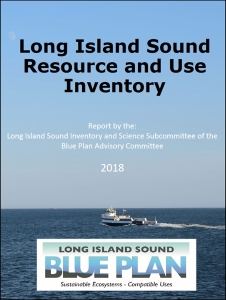 The first draft of the Long Island Sound Resource and Use Inventory (Inventory) for the
Long Island Sound Blue Plan has been completed.
The
Inventory was compiled by the Blue Plan Advisory Committee's Inventory and Science Subcommittee chaired by Sylvain De Guise, a professor at the University of Connecticut and Director of
Connecticut Sea Grant. It is based on the best data available regarding the natural resources and human uses of Long Island Sound, and contains 12 ecological and 13 human use chapters in its 294 pages. The document provides information on the current state of the Sound's natural resources (e.g., plants, animals, habitats) and human uses (e.g., recreational and commercial boating, shellfishing and aquaculture, transportation).
Ultimately, the Inventory will be used as the basis for developing the Blue Plan to minimize future conflicts with these existing resources and uses.
A public hearing to gather input on the Long Island Sound Resource and Use Inventory was held on Tuesday May 8, 2018, and written comments may be submitted to the Bureau of Water Protection and Land Reuse, Connecticut Department of Energy & Environmental Protection, 79 Elm Street, Hartford, Connecticut 06106-5127 or by email to [email protected].
|
Planning EV Outreach Events
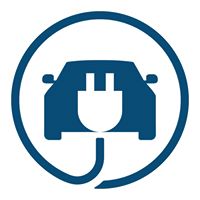 Automotive i
ndustry analysts project that there will be nearly 12 million electric vehicles (EVs) on the road by 2025, and EVs will represent 35 percent of new car sales globally by 2040
.
Fleet managers, municipalities, and businesses should start thinking today about ways to incorporate cleaner transportation options like EVs and EV charging infrastructure within their local communities. With the onset of warmer weather and clear bright days, many
businesses are reaching out to us to explore how to host ride and drive events, while at the same time, Clean Energy Task forces are requesting guidance on promoting EVs at farmer's markets and fairs. DEEP offers a wealth of resources on our
EVConnecticut website
to help you plan an EV event. We also hope people will incorporate into their EV outreach campaigns a new brand neutral educational campaign called
"Drive Change. Drive Electric"
that focuses on the benefits of driving a plug-in EV.
EVs are a smart choice that fit many lifestyles and are good for the environment. If you are planning an EV event or are interested in hosting an EV showcase/ride and drive, please let us know at
EVConnecticut so we can add your event to our
news and events webpage.
|
|
Housatonic River Restoration Projects Help Compensate for PCB Damages
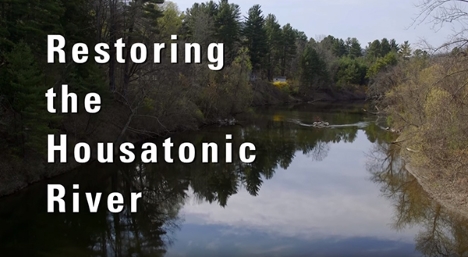
The Housatonic River flows approximately 150 miles from Pittsfield, MA, through Connecticut to Long Island Sound. This resource was damaged by the release of PCBs from a General Electric (GE) plant in Pittsfield in the 1900s. In 2000, a federal Consent Decree was approved that provided for both PCB clean-up (remediation) and compensation for PCB damages (restoration). With regard to restoration, GE was required to provide $15 million which was split between Connecticut and Massachusetts. A
video
, produced by the U.S. Fish and Wildlife Service, tells the story of federal, state, and local governments working with various organizations on restoration projects supported by these funds.
In 2009, the Connecticut SubCouncil Trustees released the
Housatonic River Basin Final Natural Resources Restoration Plan, Environmental Assessment, and Environmental Impact Evaluation for Connecticut
. In 2013, a
Final Amendment
was released. Altogether, funding was approved for 36 projects aimed at restoring, rehabilitating, or acquiring the equivalent of Housatonic natural resources and recreational uses that were injured by PCBs. Connecticut's share of funds, which grew from $7.75 million to more than $9 million in an interest-bearing account, supports projects across three restoration categories: 1) aquatic natural resources, 2) riparian and floodplain natural resources, 3) and recreational use of natural resources (
more details
).
|
|
U.S. EPA to Host Citizens Coordinating Council Meeting on Housatonic River PCB Remediation
On June 20, 2018, U.S. EPA will host a Citizens Coordinating Council (CCC) meeting in Kent, CT at the Kent Town Hall, to provide updates on the Housatonic PCB clean-up process. Visit the
EPA Cleanups: GE-Pittsfield/Housatonic River Site website where the meeting start time and agenda will be posted.
The Housatonic River flows approximately 150 miles from Pittsfield, MA, through Connecticut to Long Island Sound. The river was contaminated by the release of PCBs from the General Electric (GE) plant in Pittsfield between 1932 and 1977. In 2000, a federal Consent Decree was approved that provided for both PCB clean-up (remediation) and compensation for PCB damages (restoration). U.S. EPA is overseeing the clean-up process. In 2007, clean-up was completed for a two-mile segment of the East Branch of the Housatonic from the GE site, downstream to its confluence with the Housatonic mainstem. In 2016, U.S. EPA issued a final clean-up decision for Rest of River - the section of the Housatonic mainstem between Pittsfield and the Derby Dam in Connecticut. Portions of the clean-up decision are being contested by GE and other parties. Uncontested portions of the decision are moving forward and are in planning and review stages.
|
Gypsy Moth Update
According to the
Connecticut Agricultural Experiment Station (CAES), approximately 180,000 acres were defoliated by gypsy moths in Connecticut in 2015 and 204,167 acres were defoliated in 2016. In 2017, the outbreak was extensive and severe throughout eastern Connecticut. Approximately 1,175,000 acres were impacted by gypsy moth caterpillars, the greatest extent of defoliation seen in our state since the early 1980s. This was largely a result of nearly three years of drought that prevented or limited maimaiga fungus activity, which controls/kills gypsy moth caterpillars. Fortunately, widespread mortality from the fungus was finally observed in June 2017, just prior to pupation by the caterpillars. Egg mass counts conducted by CAES show significantly reduced amounts because of the die-off, but some smaller sporadic pockets of gypsy moths were able to produce egg masses for 2018 emergence. Those areas will see moderate to high caterpillar activity. Nevertheless, in 2018 we will not see the extensive activity and widespread defoliation observed in 2017. Because of all the caterpillars that died from the fungus in 2017, numerous resting spores are available in the environment to infect caterpillars in 2018 if the state receives the necessary spring-early summer rains (
More on gypsy moths in Connecticut /
Fact Sheet).
Landowners who experienced gypsy moth damage last year are advised to inspect their properties (including trees, outdoor furniture, and play equipment) now for last year's egg masses. That is the best way to predict whether their trees are at risk for another defoliation. Those who wish to treat individual trees should contact a licensed arborist now to schedule service.
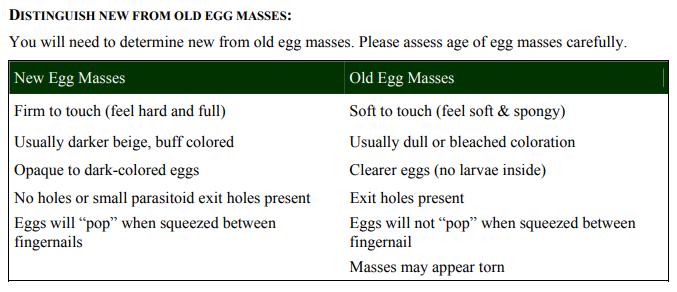
|
|
CT Companies Receive Climate Awards
Two companies with headquarters in Connecticut - The Hartford and United Technologies - were recognized at the
Annual Climate Leadership Conference for their efforts to effectively manage greenhouse gas (GHG) emissions.
 The Hartford received two awards. One was for achieving its goal of reducing GHG emissions 20 percent between 2013 and 2018. Energy efficiency strategies the company employed include elevator upgrades, steam trap improvements, building automation, insulation upgrades, and office lighting improvements. The Hartford also recycled 85 percent of demolition materials during a major renovation of its downtown Hartford office tower. The Hartford's second award was for setting an additional GHG reduction goal of 25.7 percent for the period 2015 to 2027.
 United Technologies received an award for setting a goal of 15 percent reduction in GHG emissions from 2015 to 2020.
The annual conference for businesses that prioritize climate action is hosted by the Center for Climate and Energy Solutions, The Climate Registry, and Bloomberg Philanthropies. It "brings together influential climate, energy, and sustainability professionals from around the globe to address climate change through policy, innovation, and business solutions."
|
|
|
Low Impact Sustainable Development Design Manual for Town of Morris
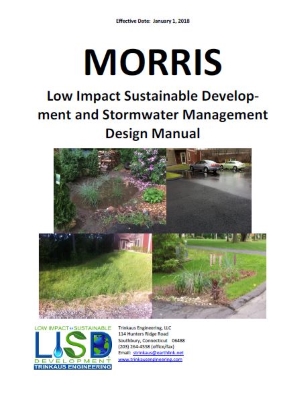 Low-impact development (LID), alternatively Low-impact Sustainable Development (LISD), is a development mindset that prioritizes minimally invasive design, construction, and site operation. It reduces rainfall runoff quantity and velocity while improving water quality on a particular site with the goal of minimizing negative impacts to receiving waters. Strategies include reducing impervious services, installation of infiltration systems, and zone-specific standards. This philosophy departs from traditional development focused on maximum parking, box-building construction, and rapid water removal from a site.
Low-impact development (LID), alternatively Low-impact Sustainable Development (LISD), is a development mindset that prioritizes minimally invasive design, construction, and site operation. It reduces rainfall runoff quantity and velocity while improving water quality on a particular site with the goal of minimizing negative impacts to receiving waters. Strategies include reducing impervious services, installation of infiltration systems, and zone-specific standards. This philosophy departs from traditional development focused on maximum parking, box-building construction, and rapid water removal from a site.
This project was sponsored by a grant from the
Connecticut Institute for Resilience and Climate Adaptation (CIRCA). CIRCA works in partnership with DEEP to increase the resilience and sustainability of vulnerable communities along Connecticut's coast and inland waterways to the growing impacts of climate change on the natural, built, and human environment.
|
Plan Now for the 2018 Hurricane Season
June 1st is the start of the 2018 hurricane season. Now is the time to dust off the plans for disaster debris management. Disaster debris, if not properly managed, can cause delays in recycling and final disposal, frustrating residents and businesses who want to return to normal as quickly as possible.
The Federal Emergency Management Agency (FEMA) is available during a disaster to reimburse communities for the clean-up costs incurred, but the municipality must follow FEMA guidelines to ensure maximum reimbursement in a timely manner. Though not required, having a disaster debris management plan allows the municipality the ability to set up debris staging sites and familiarizes the municipality with FEMA and state guidelines.
|
|
Help Wildlife - Recycle Discarded Fishing Line
 Carelessly discarded fishing line can seriously harm or kill wildlife. Animals can become entangled in, or ingest the line, which can cause starvation, strangulation, and deep wounding. Wildlife cannot usually survive the injuries they sustain from entanglement. To prevent these incidents, the DEEP, along with the
Menunkatuck Audubon Society, has installed monofilament fishing line recycling receptacles at inland and coastal sites around the state to encourage less waste line in the environment.
Find a recycling receptacle near you.
|
Update on Connecticut's VW Planning
Thank you to everyone who submitted comments on
Connecticut's Draft Mitigation Plan
. We have posted all the comments that DEEP received, a summary of the comments received, and DEEP's response to the comments on our
VW Settlement Website Resource Page
. On April 26, Connecticut submitted the
Final Mitigation Plan
to Wilmington Trust ("the Trustee").
As we await the Trustee's approval of Connecticut's plan, we continue our efforts to finalize application forms and other program documents necessary to launch the program.
 We anticipate funding opportunities for businesses and municipalities will become available this spring. All program announcements, information about future webinars, and other updates will be sent out through our VW Settlement email list. If you would like to be added to this list, please visit
DEEP's VW website
We anticipate funding opportunities for businesses and municipalities will become available this spring. All program announcements, information about future webinars, and other updates will be sent out through our VW Settlement email list. If you would like to be added to this list, please visit
DEEP's VW website
and sign up today!
|
Free Fishing License Days
As a result of legislation passed in 2014, DEEP can designate up to two dates per year as "Free Fishing License Days." To fish on these days, any resident or non-resident can obtain a free one-day fishing license good for both the inland and marine districts. The scheduled 2018 dates for Free Fishing License Days are
June 17 and August 11.
 The free license to fish for June 17 will be available in late May and the one for August 11 will be available in mid- to late July. The licenses will be available through the mobile friendly
DEEP Online Sportsmen Licensing System.
Please note:
if you obtained a fishing license in the past, your Conservation ID number will be the same; search for your user profile so you do not accidentally create a duplicate account.
|
|
Household Hazardous Waste Disposal Options
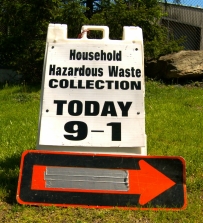 Although most CT municipalities hold
household hazardous waste (HHW) collections
between May and October, residents are often unable to drop off their items on the collection dates and will call their town for guidance. Towns can provide residents with other options, such as retail locations participating in specific take-back programs: Although most CT municipalities hold
household hazardous waste (HHW) collections
between May and October, residents are often unable to drop off their items on the collection dates and will call their town for guidance. Towns can provide residents with other options, such as retail locations participating in specific take-back programs:
- Automotive batteries may be taken to a battery retailer.
- Some stores take back cell phones and rechargeable batteries - www.call2recycle.org.
- Some stores take back compact fluorescent lamps (e.g., Home Depot, Lowe's, IKEA).
- Paint, stain, and varnish can be dropped off at participating retailers - www.paintcare.org.
- Although it could be expensive, residents may contract a licensed hauler to remove the HHW. (Check the transporter list or the "hazardous waste removal" section of the yellow pages.)
Another option is a New England Disposal Technologies Household Products Collection Center, located in Sutton or Westfield, MA. These sites are licensed as commercial household hazardous waste collection facilities and are a short drive from the MA/CT line. Visit
nedt.org
for hours of operation, the materials they can and cannot take, and the rates they charge for accepted materials.
|
Upper Farmington River Wild & Scenic Area Celebrates the 50th Anniversary of the Wild & Scenic Rivers Act
The Upper Farmington River was the first river within Connecticut to receive W&S status, in 1994, with designation of a 14 mile segment. To celebrate the 50th Anniversary of the National W&S Rivers Act, a variety of events will be occurring throughout 2018 in the
five town
region which comprises this W&S area, as well as other nearby locations. Check the
Farmington River Coordinating Committee (FRCC) calendar
regularly to find out about upcoming hikes, lectures, film festival, open house, quilt exhibit and more! FRCC is comprised of key stakeholders towns and other entities, including DEEP.
|
|
Need to contact DEEP?
Find the most up-to-date phone numbers for our program areas, a list of who to contact to report environmental concerns or problems, an A to Z subject directory, and other information about our agency on our Contact Us webpage.
|
|
| |
|